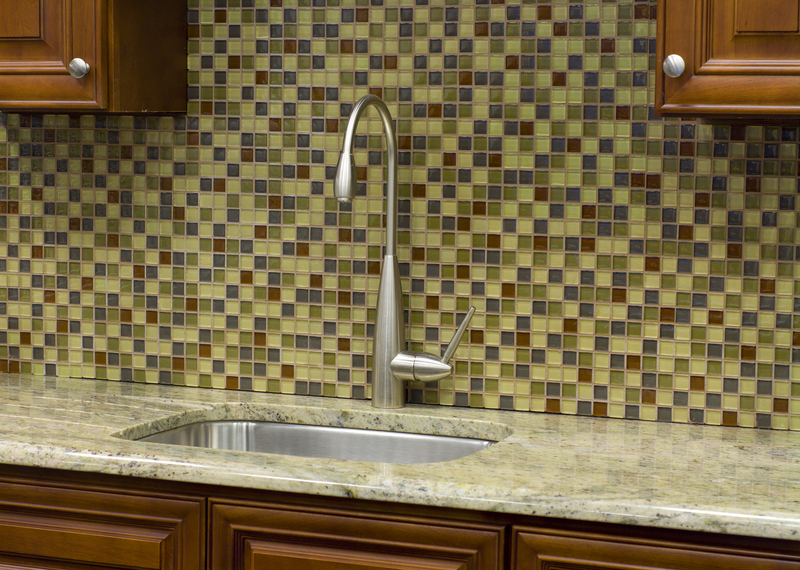Clarifying views with expert-backed window cleaning techniques
Posted on 03/10/2025
Clarifying Your Views: Expert-Backed Window Cleaning Techniques
Clean, sparkling windows can do more than just improve your home's appearance--they can uplift your mood, increase natural light, and even prolong the lifespan of your glass. While window cleaning might seem straightforward, achieving a crystal-clear result with minimum effort and maximum safety often requires a set of expert-backed techniques. This comprehensive guide reveals the best methods recommended by professionals for clarifying views with expert window cleaning techniques.

Why Clean Windows Matter
Before delving into professional window cleaning methods, it's important to grasp the value of maintaining spotless glass. Whether at home or in a commercial building, clean windows:
- Maximize daylight entry by removing grime and streaks.
- Enhance curb appeal, making your property look well-cared-for.
- Preserve window lifespan by eliminating corrosive contaminants.
- Improve indoor health by reducing allergens like dust and mold.
- Support energy efficiency by allowing sunlight to naturally warm your space.
To reap these benefits, it's critical to use expert-recommended techniques rather than haphazard approaches that can lead to streaks or even damage your windows. Let's move on to the essentials of expert window cleaning methods.
Essential Tools for Expert Window Cleaning
The efficiency of your window cleaning routine hinges on the quality of your tools. Professionals emphasize using the right equipment for crystal-clear results:
- Squeegee: A rubber-bladed squeegee is the backbone of streak-free cleaning. Choose one that matches your window's width for optimal performance.
- Microfiber Cloths: Lint-free and ultra-absorbent, these cloths are perfect for wiping away excess water and buffing for shine.
- Bucket: A sturdy bucket makes mixing solutions and rinsing tools more convenient.
- Soft-Bristled Brush: Ideal for loosening dirt and grime before the main wash, especially on exteriors.
- Extension Poles: For safely reaching high windows without the need for ladders.
- Protective Gear: Non-slip shoes and gloves help prevent accidents, particularly with exterior windows or on ladders.
Top Tip:
Invest in professional-grade tools for the best outcomes. A well-made squeegee is often the secret to those streak-free, gleaming commercial windows you admire!
Choosing the Right Window Cleaning Solution
The cleaning agent you use is critical for removing stubborn grime without leaving streaks or residues. Here are expert-backed window cleaning solutions:
- DIY Soap Solution: Mix a few drops of dish soap (preferably fragrance-free) into a gallon of warm water. It's gentle but effective on regular dirt and fingerprints.
- Vinegar-Based Cleaner: Blend one part white vinegar with one part warm water. Vinegar tackles water spots and mineral build-up, especially on exterior glass.
- Commercial Window Cleaners: Look for ammonia-free, streak-free solutions designed specifically for glass surfaces.
- Distilled Water: Using distilled water prevents mineral stains--crucial in areas with hard tap water.
Experts recommend avoiding harsh chemicals or abrasive cleaners, as these can etch or dull the surface of your windows over time.
The Step-by-Step Process for Crystal-Clear Windows
Following a professional window washing process ensures noticeable, long-lasting results. Here's a comprehensive guide to clarifying your view with expert cleaning techniques:
Step 1: Gather and Prepare Equipment
- Laundry or gather all necessary tools and cleaning solutions before starting.
- Check that all squeegees and cloths are clean and free from debris.
Step 2: Remove Dust and Loose Debris
- Start by using a dry brush or microfiber duster to remove cobwebs, dust, and loose dirt from the glass and frame.
- Pay special attention to window tracks, corners, and sills--they accumulate grime that can muddy your cleaning solution.
Step 3: Wash the Window Frame and Sills
- Dip your cloth or soft-bristled brush into the cleaning solution.
- Wipe down the frame and sill to remove sticky residue and prevent it from running onto your clean glass.
- Use a separate cloth for the frame and the glass. This prevents transfer of dirt.
Step 4: Clean the Glass Surface
- Using a separate sponge or microfiber cloth, apply your chosen window cleaning solution to the glass in a circular motion, ensuring coverage of stubborn marks and fingerprints.
- Work from the top down to minimize drips.
Step 5: Use the Squeegee for a Streak-Free Finish
- Wet your squeegee in the solution, then start at the top corner of the window.
- Pull the squeegee smoothly across the glass in a straight line. For larger windows, work in overlapping "S" patterns.
- Wipe the blade with a lint-free cloth after each pass to prevent streaking.
Step 6: Buff and Dry
- Use a dry microfiber cloth to wipe any remaining drips or spots on the glass, especially along the edges and corners.
- If streaks appear, re-buff these areas for a spotless finish.
Step 7: Final Touches
- Double check your work from different angles to spot missed smudges or streaks.
- Wipe the sills and any nearby surfaces clean and dry.
Advanced Window Cleaning Techniques from the Experts
When tackling extra-tough situations, such as hard water stains, sap, or exterior pollution marks, professional window cleaners employ these expert techniques:
1. Water-Fed Pole System
This method uses telescopic poles fitted with a brush and a stream of purified water. It's ideal for high, inaccessible windows, leaving no streaks or residue after drying. The purified water acts as a powerful solvent that lifts grime without the need for additional chemicals.
2. Scrubbing Pads and Razor Blades
For paint spots or stubborn stuck-on substances, experts might use a fine scrubbing pad or a dedicated window cleaning razor blade, held at a 45-degree angle, to gently scrape without scratching the glass. Always ensure the glass is wet and clean of grit before scraping.
3. Addressing Mineral Deposits
White vinegar, lemon juice, or specialized mineral deposit removers can be applied to stubborn water stains. Let the solution sit for 5-10 minutes before rinsing and wiping clean.
4. Using Weather Conditions to Your Advantage
Cleaning windows on a cloudy day prevents rapid evaporation, which can leave behind streaks before you can squeegee the surface. Experts avoid cleaning windows in direct sunlight.
Insider Tips for the Best Results
Beyond the fundamental process, professional window cleaners share these insider secrets for immaculate windows:
- Change and clean cloths frequently--dirty or saturated rags redistribute grime and create streaks.
- Wash windows twice a year at a minimum; more often in dusty or humid climates.
- Don't forget screens: Remove and hose down screens regularly to prevent transfer of dirt back to clean glass.
- Avoid paper towels: They can leave lint and paper residue behind; opt for microfiber or chamois cloths instead.
- Check window seals and caulking while cleaning to maintain insulation and prevent leaks.
Common Mistakes to Avoid in Window Cleaning
Even the most diligent cleaner can fall into pitfalls that undermine their results. Here's what not to do when clarifying your windows:
- Using dirty water: When your bucket becomes murky, change it out to avoid spreading dirt.
- Cleaning in the sun: As mentioned, this hastens drying and leads to streaks.
- Skipping pre-cleaning steps: Failing to dust or brush off loose debris grinds dirt into the glass as you clean.
- Overloading with cleaner: Excess soap or chemicals require extra rinsing and polishing, often causing streaks.
- Unsafe ladder use: Always prioritize safety, or use extension poles for high windows.
Eco-Friendly and Safe Window Cleaning Practices
As environmental awareness grows, many homeowners seek green window cleaning solutions that are safe for both the planet and their homes. Here's how to keep your window cleaning both effective and eco-friendly:
- Choose natural ingredients, like vinegar and lemon juice, to avoid noxious fumes and water pollution.
- Use reusable microfiber cloths instead of disposable paper or chemical wipes.
- Minimize water waste by using buckets rather than hoses and rinsing only when necessary.
- Recycle or responsibly dispose of old blinds or broken screens when upgrading your windows.
Maintenance: Keeping Your Windows Clean Longer
Now that you've achieved sparkling clean windows, what's the best way to keep them that way? The pros suggest these regular maintenance steps:
- Spot clean spills or bird droppings immediately to prevent etching or hard-to-remove stains.
- Install window awnings or overhangs to reduce splash marks and shield windows from the elements.
- Trim back trees and shrubs to minimize sap, pollen, and leaf residue on exterior glass.
- Consider professional cleaning every 6-12 months for hard-to-reach or quality results, especially for commercial properties.
- Apply window sealant or water-repellent solutions to help repel dirt and water spots between cleanings.
When to Call the Professionals
Some window cleaning jobs, due to height, extensive staining, or size, are best left to the experts:
- If your property has multi-story windows, ensure safety by relying on licensed professionals with the proper equipment.
- If you encounter persistent mineral stains or high-traffic commercial glass that require heavy-duty cleaning, specialist services can restore clarity without risking damage.
- Damaged or foggy double-glazed panes may require professional glass restoration or replacement, not just cleaning.

Frequently Asked Questions about Window Cleaning Techniques
- How often should I clean my windows?
Experts recommend at least twice a year, although households in polluted, coastal, or dusty areas should clean quarterly for the best results.
- What is the best way to avoid streaks?
Always use a clean squeegee and microfiber cloth, work in indirect sunlight, and dry the window immediately after washing.
- Is vinegar safe for all windows?
Vinegar is safe for most standard glass but can damage specialty glass or treated coatings. Test on a small area first if unsure.
- Can I use newspaper to clean windows?
While old advice touted newspaper, modern paper and ink formulations can leave residue. Microfiber is now preferred by pros.
Conclusion: Unlock Crystal Clarity with Professional Window Cleaning Methods
Mastering clarifying views with expert-backed window cleaning techniques not only heightens your home's beauty and natural light but supports a healthier, longer-lasting environment for your family or business. By using the right tools, tested cleaning agents, proven processes, and a little professional know-how, you'll leave your windows gleaming--and your outlook a little brighter, too.
For spotless, streak-free windows every time, trust in the time-tested, expert-approved methods detailed above; your views will thank you!



